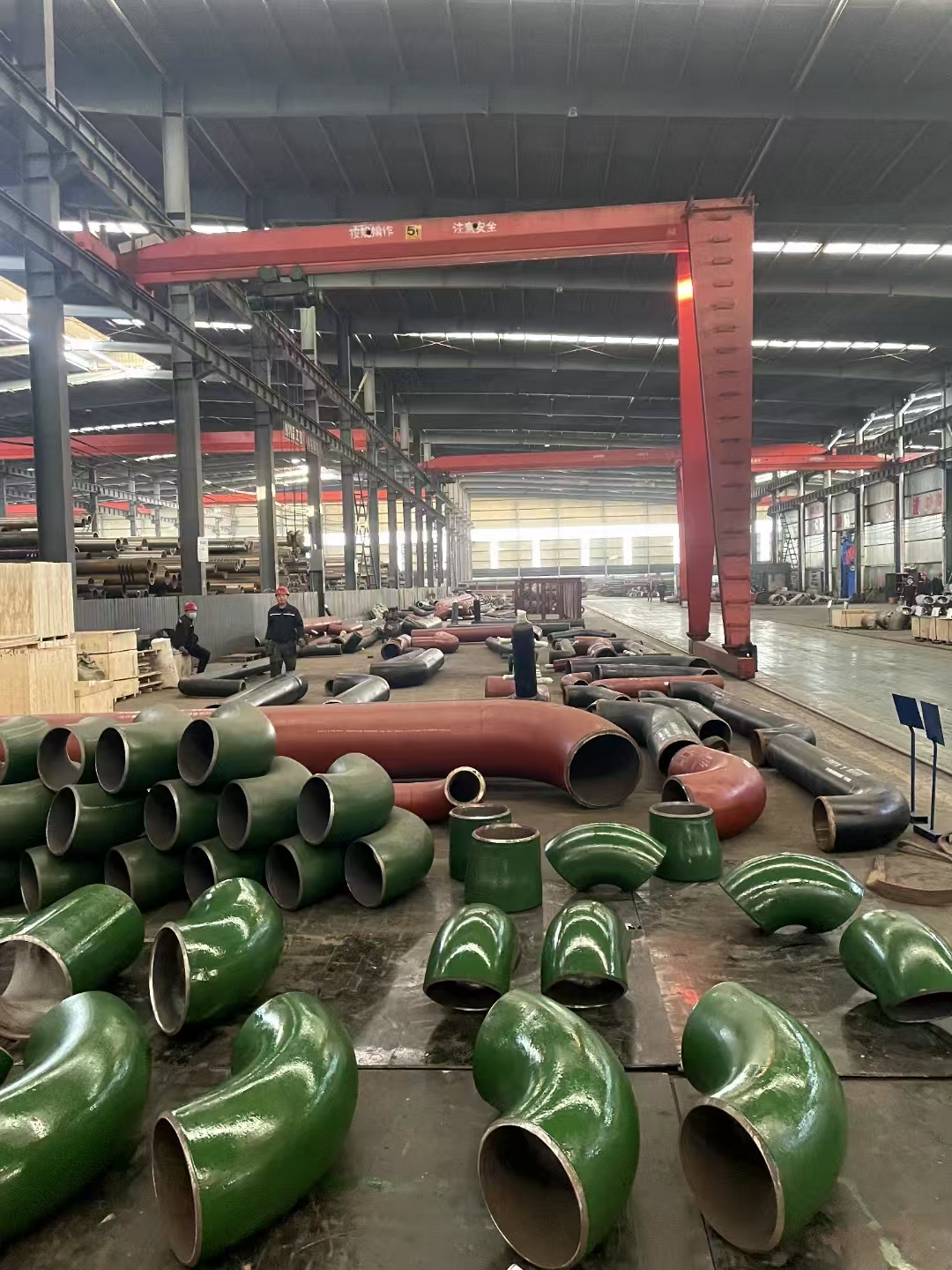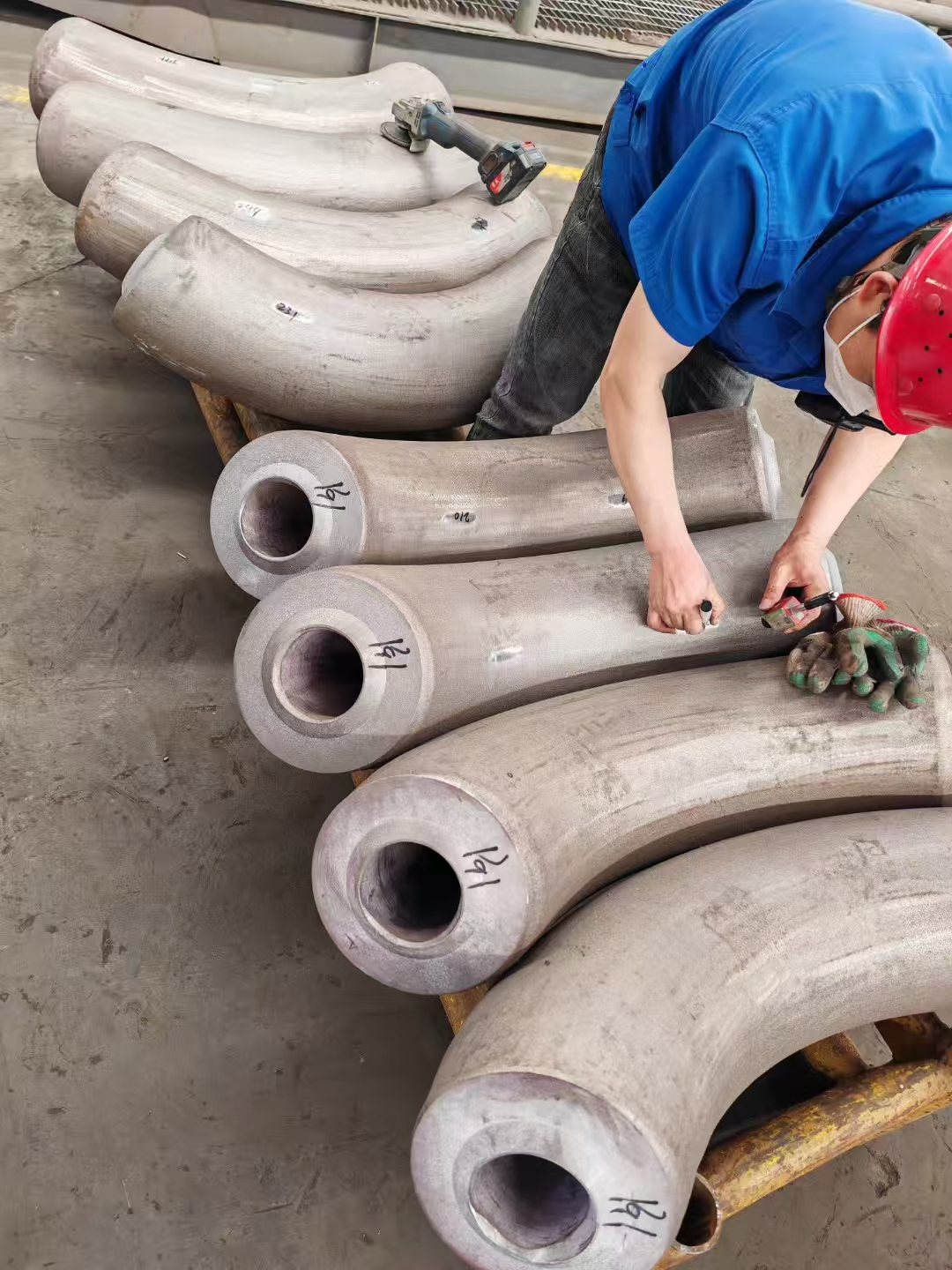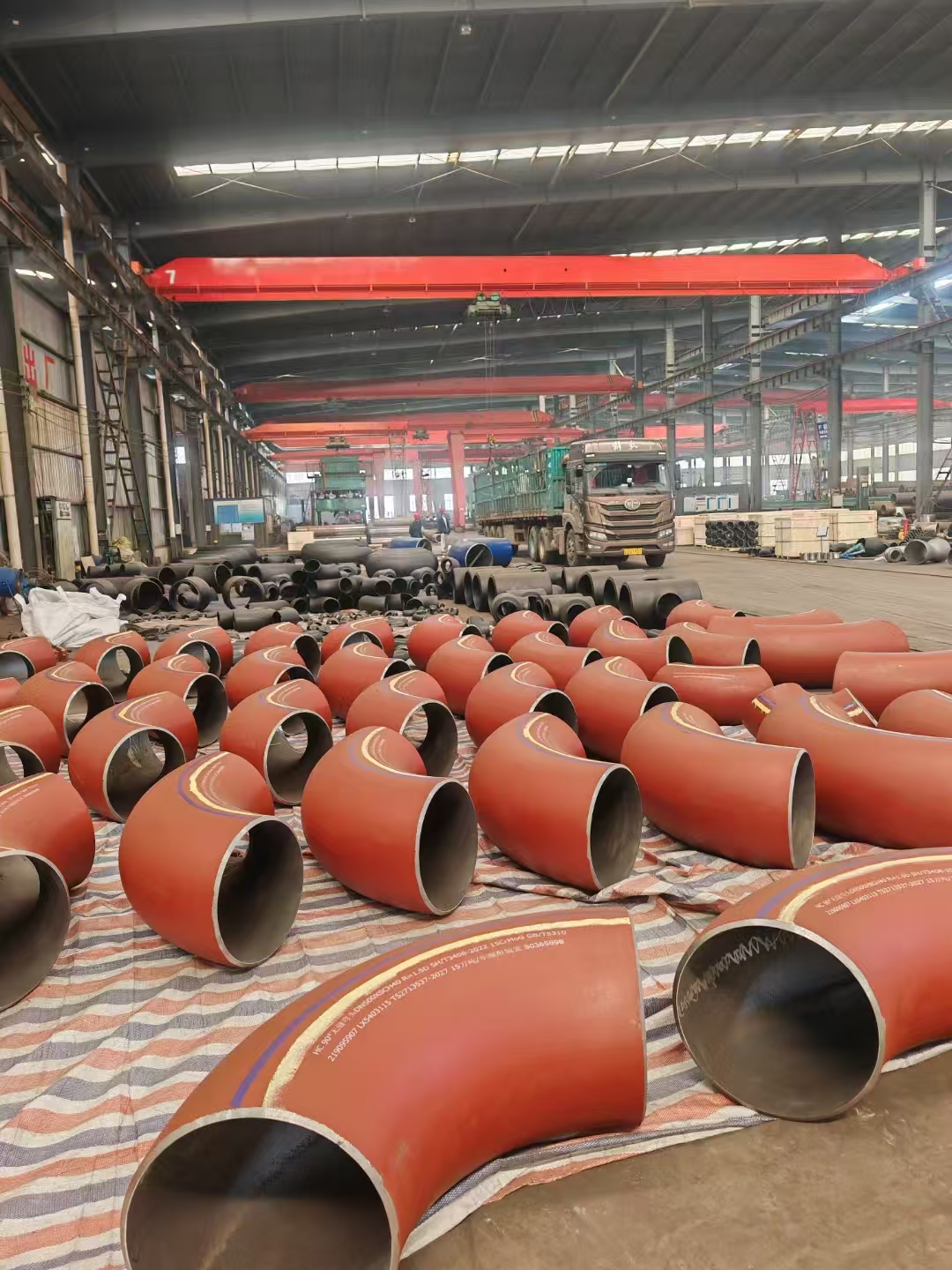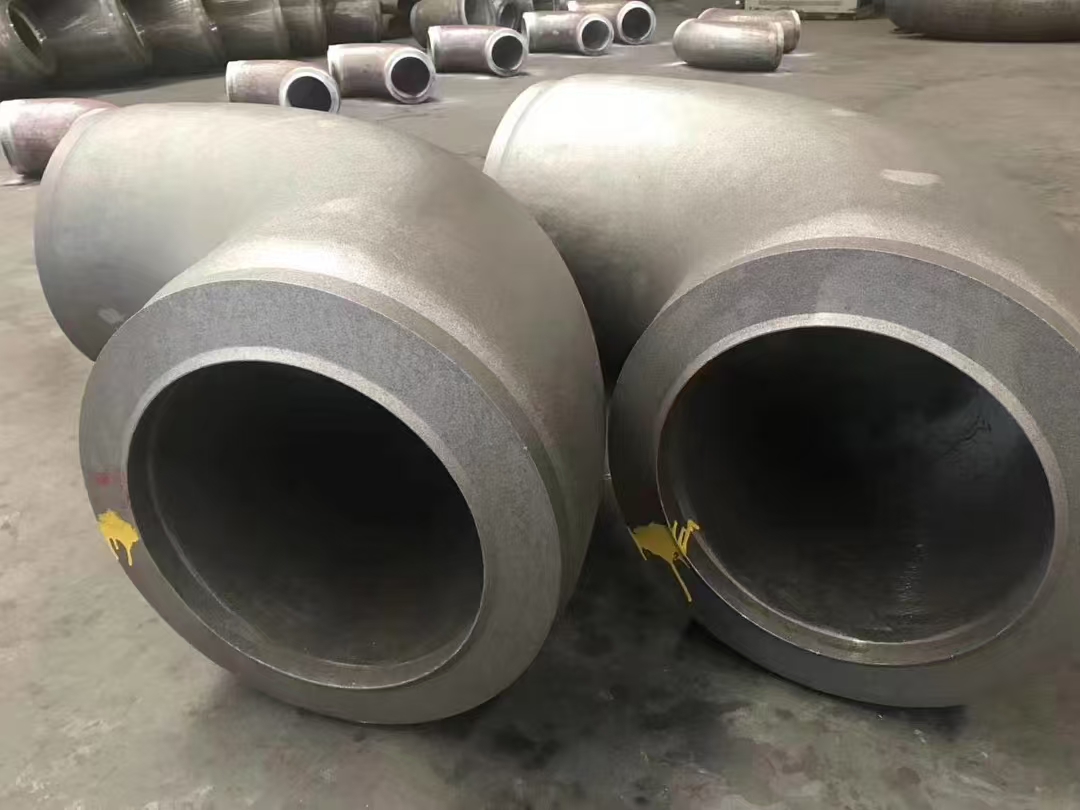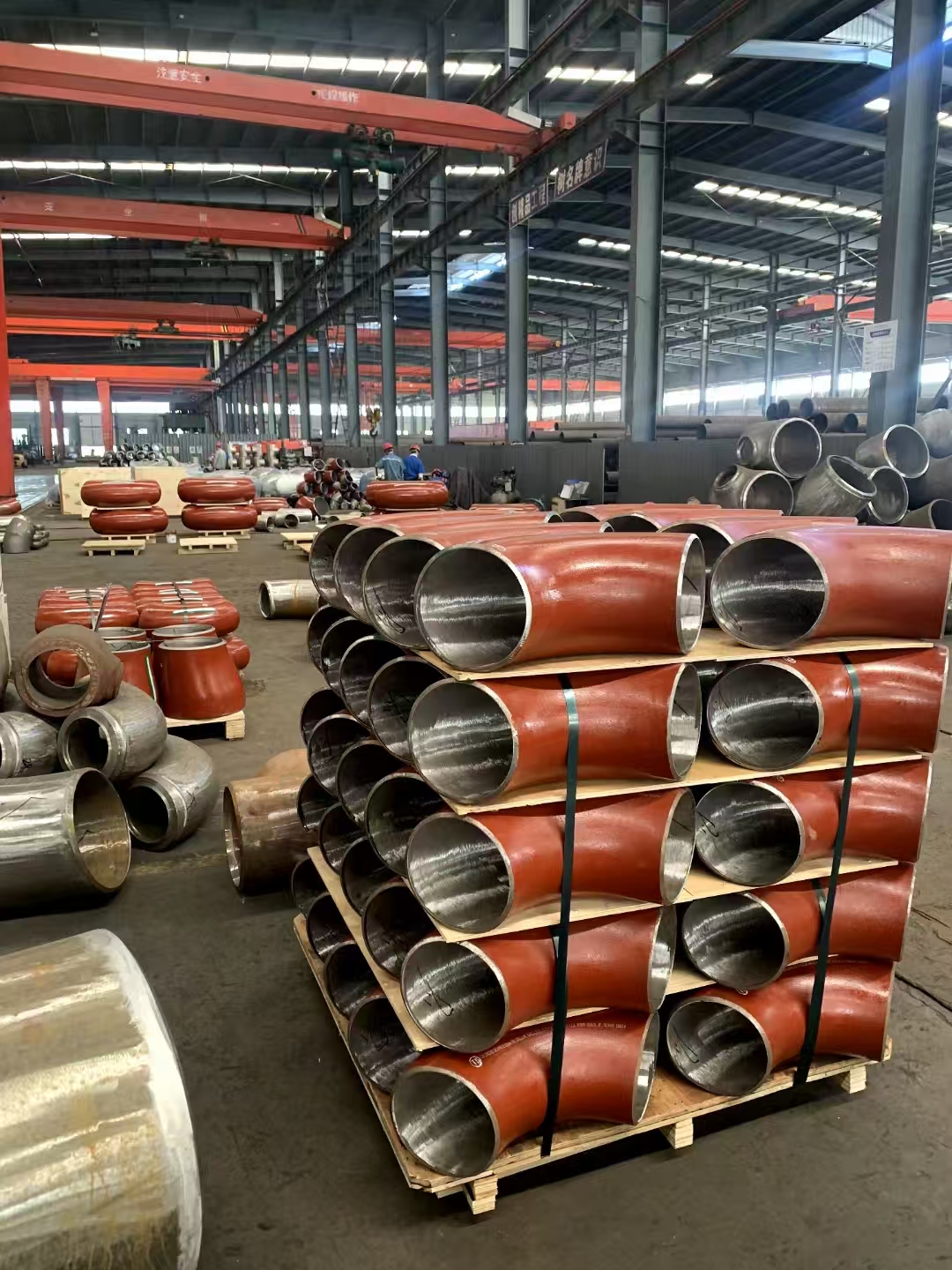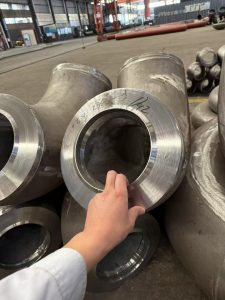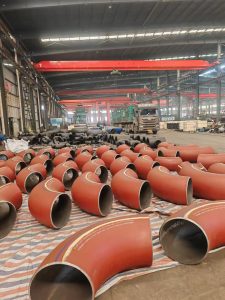WB36 (1.0566) Pipe Fittings – Technical Specifications
1. Material Overview
WB36 (also known as 1.0566) is a German pressure vessel steel with enhanced properties for nuclear and power plant applications. These fittings feature:
– Superior strength at elevated temperatures
– Excellent weldability
– Good toughness properties
– Optimized for pressurized components
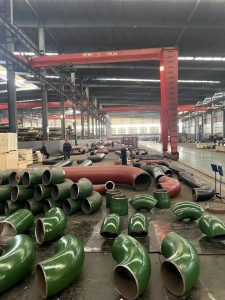
2. Chemical Composition (%)
| Element | Composition Range | Key Effect |
|———|——————|————|
| C | 0.14-0.20 | Strength & hardenability |
| Mn | 0.80-1.50 | Austenite stabilization |
| P | ≤0.025 | Purity control |
| S | ≤0.015 | Purity control |
| Si | 0.10-0.50 | Deoxidation |
| Ni | 0.50-1.00 | Toughness enhancement |
| Cu | 0.20-0.50 | Corrosion resistance |
| Nb | 0.015-0.045 | Grain refinement |
| V | 0.02-0.08 | Precipitation strengthening |
3. Mechanical Properties
| Property | Requirements | Test Standard |
|———-|————–|—————|
| Tensile Strength | 570-720 MPa | DIN EN ISO 6892-1 |
| Yield Strength | ≥360 MPa | DIN EN ISO 6892-1 |
| Elongation | ≥18% | DIN EN ISO 6892-1 |
| Impact Energy | ≥35J @ -20°C | DIN EN ISO 148-1 |
| Hardness | ≤220 HB | DIN EN ISO 6506-1 |
4. Temperature Performance
– **Design Temperature Range**: -20°C to 400°C
– **Maximum Short-term**: 450°C
– **Optimum Service Range**: 0-350°C
5. Manufacturing Standards
– **Base Specification**: DIN 17155 / EN 10222-3
– **Dimensional Standards**:
– EN 10253 (Butt-welding fittings)
– EN 10297 (Seamless fittings)
– **Heat Treatment**:
– Normalizing: 880-950°C
– Tempering: 580-680°C
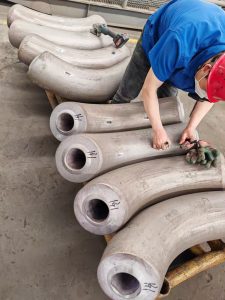
6. Available Fitting Types
1. **Nuclear-grade Elbows** (45°/90°)
2. **Heavy-Wall Tees**
3. **High-Pressure Reducers**
4. **Reinforced Caps**
5. **Special Transition Pieces**
7. Heat Treatment Protocol
– **Normalizing**:
– 900°C ±20°C (1650°F ±35°F)
– Air cooling
– **Tempering**:
– 630°C ±20°C (1165°F ±35°F)
– Minimum 1 hour per 25mm thickness
– **PWHT Requirements**:
– 580-620°C (1075-1150°F)
– 2 hours minimum hold
8. Welding Technology
– **Preheat**: 150-200°C (300-400°F)
– **Interpass Temp**: ≤250°C (≤480°F)
– **Filler Metals**:
– SMAW: E7018-G
– GTAW: ER70S-G
– **Critical Controls**:
– Heat input: 15-35 kJ/cm
– Post-weld hardness ≤240 HB
– 100% volumetric examination
9. Quality Assurance
– **Mandatory Tests**:
– Hydrostatic (1.5x design pressure)
– Full-section tensile tests
– Charpy V-notch testing
– **Special Examinations**:
– Delta ferrite measurement
– Grain size analysis
– Advanced NDE (TOFD, PAUT)
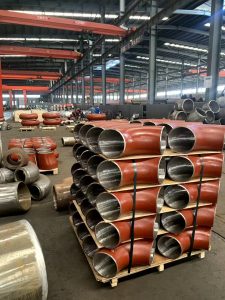
10. Microstructural Characteristics
– **Optimal Structure**: Fine-grained ferrite-pearlite
– **Grain Size**: ASTM No. 6 or finer
– **Inclusions**: ≤2.0 (SEP 1571)
11. Applications
– **Nuclear Power Plants**:
– Primary coolant systems
– Pressurizer components
– Safety injection systems
– **Conventional Power**:
– Feedwater systems
– High-pressure piping
– **Industrial**:
– Process piping
– High-pressure vessels
12. Comparative Analysis
| Grade | Standard | Key Difference |
|——-|———-|—————-|
| WB36 | DIN 17155 | Ni-Cu-Nb-V alloy |
| P265GH | EN 10216-2 | Lower strength |
| 16Mo3 | EN 10216-2 | Molybdenum alloy |
13. Purchasing Specifications
Essential requirements:
1. **Material Certification**: EN 10204 3.1/3.2
2. **Heat Treatment Records**: Complete documentation
3. **NDE Packages**:
– 100% UT + RT
– Surface examination (PT/MT)
4. **Impact Test Reports**: -20°C minimum
5. **Traceability**: Full material pedigree
14. Installation Best Practices
1. **Storage**: Dry, covered conditions
2. **Handling**: Non-magnetic lifting gear
3. **Alignment**: Precision laser alignment
4. **Welding**: Qualified nuclear procedures
5. **PWHT**: Furnace treatment with chart recording
15. Lifecycle Management
– **Inspection Technologies**:
– Ultrasonic thickness monitoring
– Replica metallography
– Hardness mapping
– **Retirement Criteria**:
– 15% wall thinning
– Crack-like indications
– Excessive hardness variation
WB36 pipe fittings require nuclear-grade quality assurance throughout their lifecycle. Compliance with KTA rules (German Nuclear Safety Standards) is mandatory for nuclear applications. For non-nuclear use, EN 13480-3 provides design guidance. Special attention must be paid to copper content control to minimize irradiation embrittlement in nuclear service.

